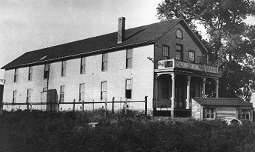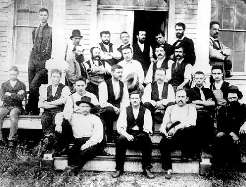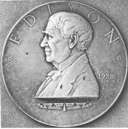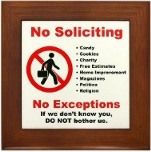|
|
|
 |
|
Thomas Edison's
| |
|
Nearly everyone knows that Thomas Edison invented the light bulb, but
what most people don't know is that one of his greatest inventions was
figuring out a better way to invent things - the research laboratory. |
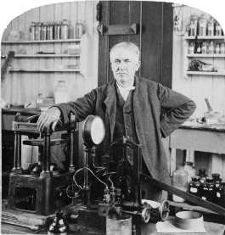 |
At 15, he began publishing the first newspaper ever to be published aboard a moving train. He then learned telegraphy and traveled the country as a telegraph operator. It was during this time that he created his first important invention, a telegraphic repeater that automatically transmitted messages over a second line.
In 1868, he invented an electrical vote counter and got his first patent
for it. In 1869, he designed an improved stock ticker and then set up a
company to manufacture it. In 1874, he invented the quadruplex
telegraph, capable of sending up to four messages simultaneously. By
1877, he had earned $40,000 from his inventions and decided it was time
to expand and refine his invention process.
Edison's goal was always to create a small invention every ten days and a big invention every six months. His most important consideration when deciding whether to begin a project was to determine what would be the ultimate practical commercial application. In other words, what was going to be the product and how he could make money from it. Edison once said, "I always invented to obtain money to go on inventing" so for him the money wasn't really the goal, just a means to insure that he could continue his work. Eventually the lab at Menlo Park was just too small to contain all of the work that he wanted done, so Edison began building a new laboratory complex in West Orange New Jersey. He hired a much larger and diverse staff, consisting initially of more than 200 machinists, scientists, craftsmen, and laborers. One associate of Edison's recalled that when a new employee asked him if there were any rules, Edison replied "There ain't no rules around here. We're trying to accomplish something." The staff was divided by Edison into as many as 10 to 20 small teams, each working simultaneously for as long as necessary to turn an idea from a prototype to a working model that could be manufactured.
Rather than sell the patent rights or royalties to his inventions, Edison knew that the real money was to be made from selling products. so he built large factories next to his laboratory complex to mass-produce them. Not only did he manufacture movie cameras and projectors, but he even built a movie studio for making motion pictures. The building had a roof that opened up to let the sun in and the entire structure was on a turntable that could be rotated to keep the sun pointed at the stage throughout the day. By creating a large laboratory and factory complex that eventually employed nearly 5,000 people, Edison could undertake more projects with greater resources than had ever been possible before. His research and development laboratories were the first of their kind anywhere and revolutionized the process of technological research. His vision led to a new era in which innovation proceeded at an unprecedented rate, bringing with it great improvements in the quality of life of every individual and many changes to society. In 1892, the Edison General Electric Company merged with another small research and development company to form General Electric. Since then, GE has grown into a diversified technology, manufacturing and services corporation with 250 manufacturing plants in 26 different nations. GE employs 313,000 people worldwide and in 2001 had revenues in excess of 125 billion dollars.
|
|

